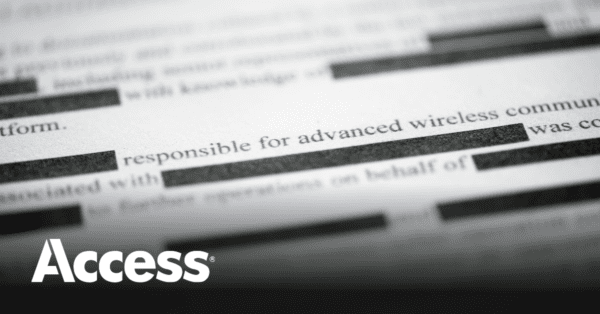
As part of their State Electronic Records Initiative, the Council of State Archivists (CoSA) announced in 2012 that October 10th that year and every year forward would officially be known as Electronic Records Day.
Why that day?
One reason is because the date can be expressed as 1010, so it’s a bit of a tongue-in-cheek binary joke.
In this post, we’re going to talk about why electronic records day matters now more than ever. We’ll also discuss this year’s theme, and how to implement it in your information management program.
What is Electronic Records Day and Why Does it Matter?
According to CoSA, the goal with Electronic Records Day is to “raise awareness among state government agencies, the general public, related professional organizations, and other stakeholders about the crucial role electronic records play in the world”.
While paper is still an inescapable reality for many organizations (though that is changing), there are more and more ways that electronic records are being generated.
Whether it’s Microsoft Teams, images, Slack messages, or some yet to be invented format, managing these electronic records as part of your holistic information management program becomes ever more important for one reason:
Electronic records are far easier to proliferate than physical records. This makes governance, access control, and avoiding a content spiral all the more difficult. Moreover, unlike physical records, you can’t “just” delete the file or sentence and call it a day. As CoSA describes it in their upcoming presentation:
“Restrictions…become even more difficult to enforce when dealing with the unique properties of born digital materials, the sheer volume of electronic records generated, and the security issues inherent in their storage and access.”
For instance, this blog post was written in a word processor with version history. Even though earlier versions of this post were “deleted’, previous versions of this document still exist in some server somewhere. Even if the draft was moved into the trash and deleted, that information still exists somewhere, which brings us to this year’s theme for Electronic Records Day: redacting electronic records.
The Official Theme for Electronic Records Day 2022 – Redacting Electronic Records
When sharing records, sometimes there are conflicting needs where a requester may need access to a record, but the record contains sensitive information that they should not be privy to.
Redacting physical records can be as easy as using opaque tape or ink over the sensitive information and making a copy so that it cannot be seen through. With electronic records, taking care of the matter isn’t as easy.
When sharing these types of digital records, beware. “As the record is digital,” notes CoSA, “the internal bitstream of a file can still reveal or provide clues about redacted content.”

5/7 Leveraging Your Data: A Journey Through 3 Essential Information Gates
Join our upcoming webinar, where we will guide you through the essential steps to be successful in the age of digital information. The Three Gates to Digital are your roadmap to harnessing the power of technology, improving efficiency, and achieving…
Best Practices for Deleting Digital Records
If you’re looking to share a redacted version of a digital record, here are some best practices to follow according to CoSA:
- Understand where PII is located in your records. This might include account numbers, social security numbers, PHI, or other sensitive data.
- Trust but verify. Even if you have used a redaction method successfully before, you should always verify that the sensitive information is no longer available in the digital file.
- Make sure you use bit-level redaction, and confidential information is not recoverable.
- Retain original records as preservation files. Only perform redactions on derivatives of originals.
Conclusion
If you could use some more detailed information around the legal and privacy requirements in digital formats, check out our eBook, Going Paperless, to answer all your questions around metadata, ‘wet’ signatures, and all things digitization.
Check Out “Going Paperless” Now!
Continue the conversation about Electronic Records Day over on LinkedIn or Twitter using the hashtag #electronicrecordsday.




